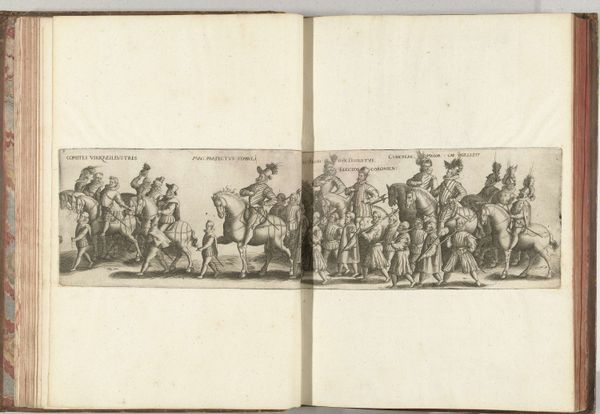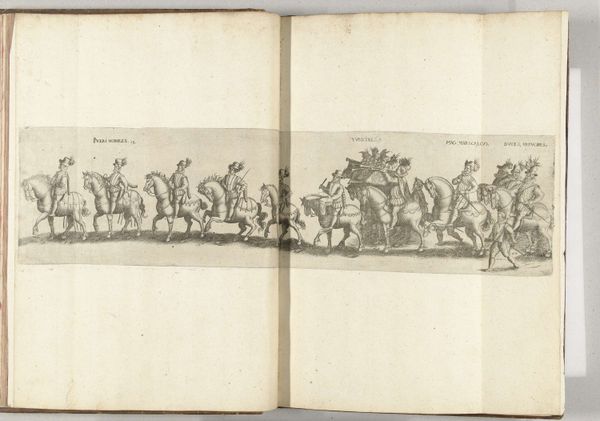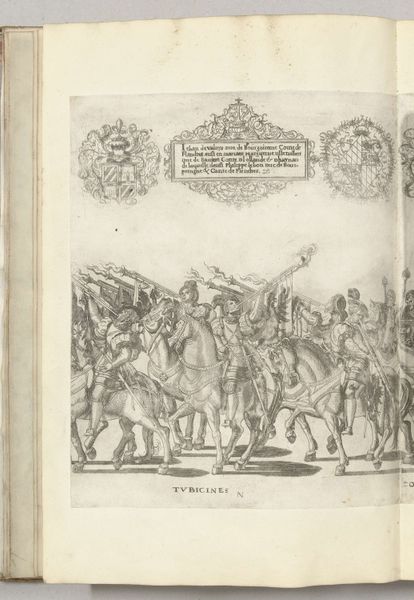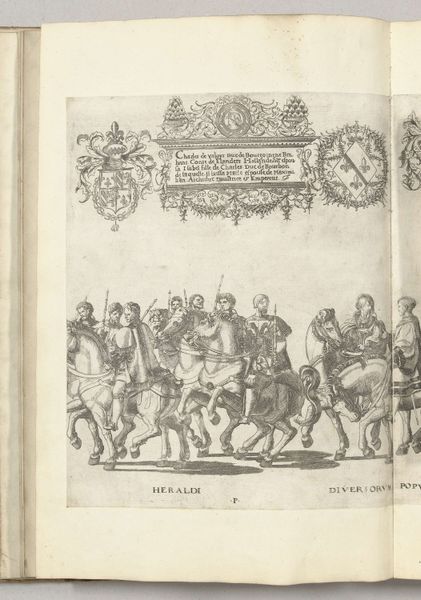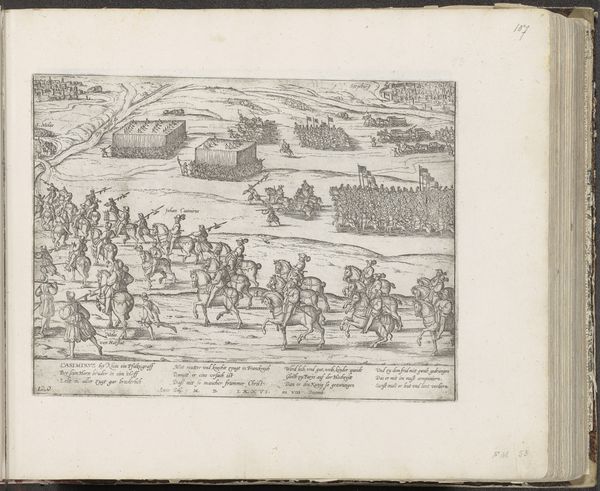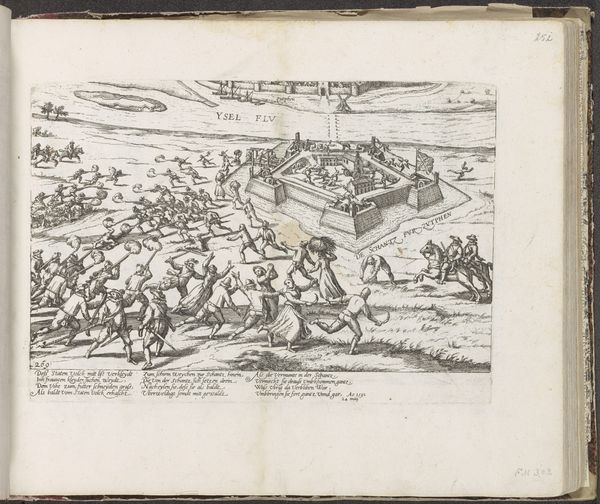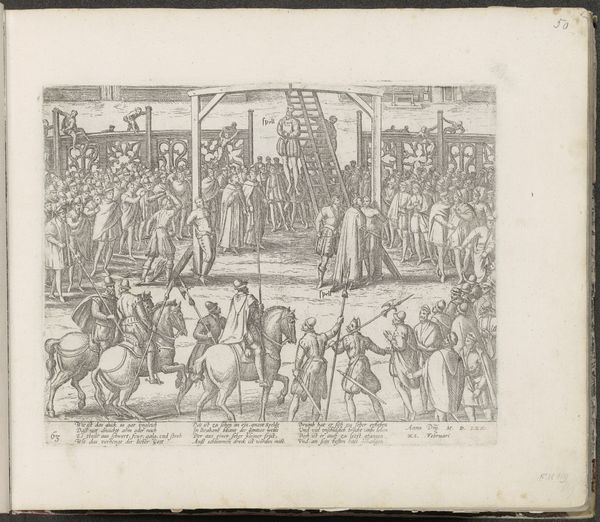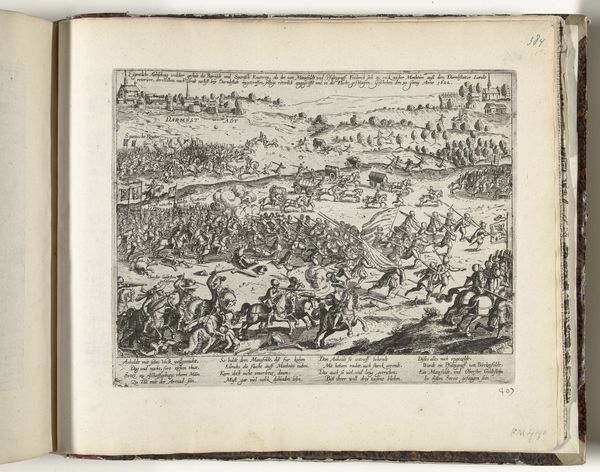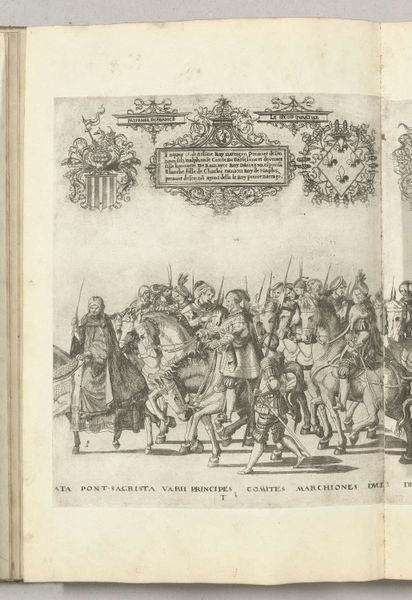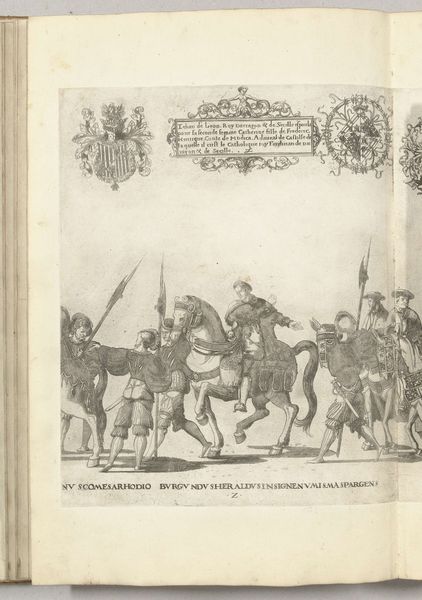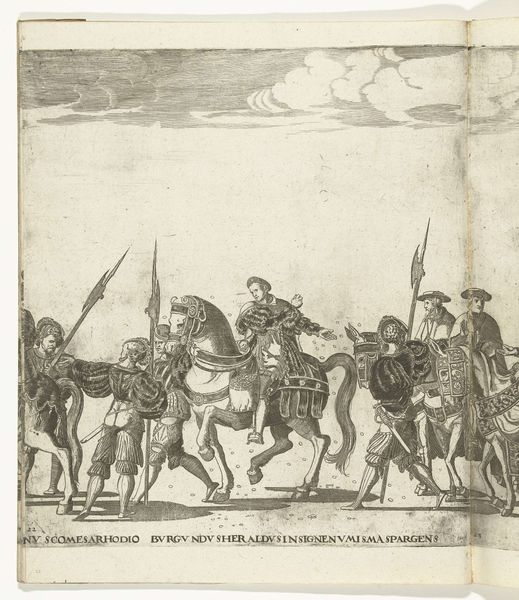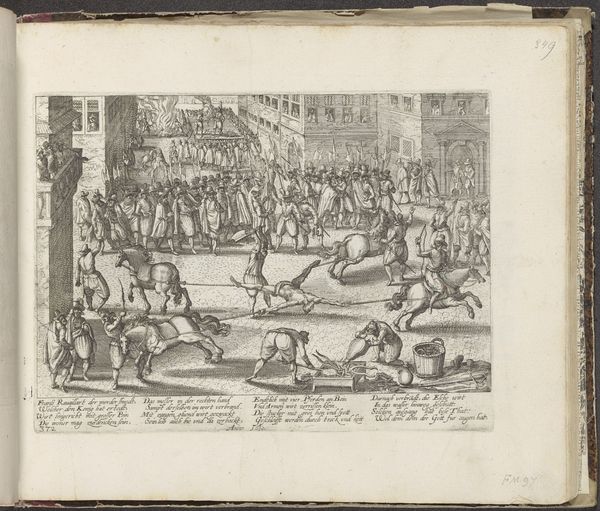
De stoet met aartshertog Ernst bij de intocht te Brussel (deel 3), 1594 1594
0:00
0:00
print, paper, engraving
#
baroque
# print
#
paper
#
coloured pencil
#
genre-painting
#
history-painting
#
northern-renaissance
#
engraving
Dimensions: height 140 mm, width 530 mm
Copyright: Rijks Museum: Open Domain
Curator: Looking at this print, its linearity and repetition give it a unique rhythmic quality. Editor: Indeed! We are viewing a page from a book, held at the Rijksmuseum, depicting "The procession with Archduke Ernst at the entrance to Brussels," created anonymously in 1594. It appears to be an engraving on paper. Curator: The way the figures are presented in these neat rows immediately brings to mind issues of production and social hierarchy. Printmaking at this time involved intense labor and specialized workshops. Each print would be relatively affordable, designed for distribution as documents of status. Think about the many hands that must have touched this to get it made and shared! Editor: Absolutely. The archduke here appears as a cultural and political icon of power and prestige. Horses are prevalent symbols of nobility and warfare. Notice how his figure stands out despite being part of the larger group through subtle alterations of garb and directionality. The artist highlights his importance while showing him within the full frame of civic inclusion. Curator: The materiality of the print is crucial too. Paper production at the time involved complex processes, depending on textile recycling or new fiber sources and water management for the mills, connecting artistic expression directly to industrial procedures. Editor: Looking more closely, I can't help but imagine how those symbols played out. The horses are not just horses; they symbolize military strength and aristocratic status. Consider how this parade operates as a performative act, embedding political values in the viewers. Each waving banner and carefully positioned rider communicates specific claims of authority, influencing popular perception of the Archduke and the Empire. Curator: From my perspective, I am very interested in how accessible these images made elite spectacle through inexpensive print technologies, thus impacting ideas about labor as well. Editor: This image then stands not only as art, but as a historic, social, and ideological artifact of an elaborate display!
Comments
No comments
Be the first to comment and join the conversation on the ultimate creative platform.
